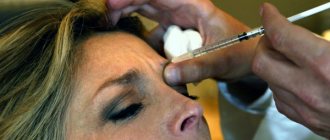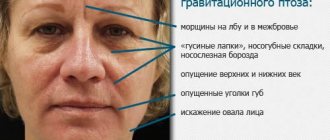In modern cosmetology, so many effective and varied tactics have appeared to combat unwanted hair on the face and body that the desire to use the electrolysis service seems something mysterious and comical. But one cannot help but admit that conservative patients are still “hunting” for it, ignoring doctors’ advice to try alternative types of professional and high-quality hair removal.
“I swear I will endure the pain from the electrodes! I promise to bravely not bother the cosmetologist for the entire 2-3 hours while the procedure is going on!” — this is approximately the oath patients take when agreeing to undergo electrolysis. Yes, we understand that the most reliable remedy is a proven remedy. If you epilate your hair with electricity, you have many questions about other types. So let's find the answers to them.
According to official statistics, persistent side effects after electrolysis are observed in 45% of cases. First of all, this concerns microscars and age spots in the affected area.
Electrolysis is one of the oldest hair removal methods, used since the 40s of the last century. It is quite harmful in terms of delayed consequences.
The essence and principle of operation of electrolysis
The concept of electrolysis means the removal of hair from the human body when exposed to electric current. The principle of its action is to destroy the hair follicle from an electrical discharge. A special needle-electrode conducts impulses to the follicle, and the current has a certain power, which is not at all dangerous to humans.
Electrolysis is an absolutely safe procedure for a healthy human body. But with some contraindications.
Electrolysis was first used to get rid of ingrown eyelashes in 1875 in the USA by ophthalmologist Charles Michael. It took a whole century to get a device for electric hair removal with a display and functionality that is so familiar in our time.
Types and techniques of electrolysis
In beauty salons, electrolysis is carried out using different methods. The technique behind them is the same - exposure to electric current, which is quite painful, but removes hair of all colors and types.
Electrolysis can be performed using needles or tweezers
Existing types of procedures depending on the devices used:
- Tweezer electrolysis is carried out by grasping each hair with tweezers, through which an electrical charge is applied. The advantage of this type is that it is painless, but in areas with dense vegetation this procedure takes a very long time.
- Needle electrolysis is more popular. The hair follicle dies from the electric current that reaches it through the electrode needle. This needle is inserted under the skin into the sprout area, so the process is quite sensitive. The needles used are made of a special medical alloy for surgical products, and are also coated with Teflon or gold.
Cosmetic techniques used for electrical hair removal:
- Thermolysis is based on the use of high-frequency alternating electric current, which leads to a targeted release of thermal energy and death of hair follicle cells. This method has been practiced since the 40s of the twentieth century. Due to the use of needles, the procedure requires local anesthesia and is not suitable for sensitive areas of the face and bikini area. If the structure of the hair follicle is curved, this interferes with the precise insertion of the electrode needle.
- An improved method of thermolysis is called the flash method. Translated from English, flash means flash. The difference between this technique is the very high frequency of the current, which acts quickly, and the application of an insulating coating on the needle reduces the pain and trauma of hair removal.
- Electrolysis is electrolysis using galvanic, that is, direct current. After an electrochemical reaction, an alkali is formed deep in the hair follicle, which gradually destroys it. Electrolytic burn occurs. Moreover, the alkaline solution is liquid and penetrates even into curved hair channels, but this takes some time. But the pain of electrolysis is an order of magnitude lower. Different hair diameters require different current strengths.
- The blend method is an improved combination of all of the above. At the same time, it combines the principle of heating thermolysis and the principle of electrolysis to destroy the hair. That is, first the hair roots are destroyed by heat, and then by alkali. Therefore, with the blend technique, less pain is felt at a sufficiently high speed of conduction.
- The sequential blend method (from the English sequential - next, subsequent) is an improved version of the blend method. At the moment the needle is inserted, the amplitude of the direct electric current decreases, causing the force of action to destroy the follicle to increase. As a result, the duration of the procedure is reduced and the comfort of the procedure increases.
How often should you do it and how long does the effect of electrolysis last?
Hair follicles destroyed by electric current are removed using tweezers. Don't expect complete hair removal the first time. After all, some of the hair follicles are in a dormant state; after 2–3 weeks they wake up and another hair removal is required. In general, 10–15% of the hair dies off during the first session; an area of 100 square meters of skin is treated in an hour. see. For the second - the same amount. Thus, it will take five to ten sessions to get full results. But everything is very individual, because each person’s hair has a different thickness, depth of location in the epidermis and density of growth. An undoubted advantage is the fact that each electrolysis session makes the hair thinner and grows more slowly.
Upon completion of all necessary sessions, hair does not appear on the body for three to six years. But you need to know that correction will then be required. This repeated hair removal-correction takes less time, that is, 1-2 sessions, and its necessity is associated with late activation of the hair follicles.
To achieve the desired result, you need to carry out 5–10 electrolysis sessions
Comparison of laser and electrolysis
The mechanism of hair removal with laser and electric current is the same and consists in the destruction of hair follicles.
Let's look at the differences between laser hair removal and electrolysis:
- In terms of sensitivity, of course, electrolysis is inferior. Needles injure the skin, but laser waves do not. Therefore, using a laser is much more comfortable.
- In terms of duration, electrolysis is ahead of laser hair removal. The effect of electric current occurs, one might say, on each hair separately, so the procedure takes, depending on the area being epilated, from two to five hours. One foot treatment session can only take 5 hours. The laser covers several centimeters of skin in one flash, and laser hair removal itself lasts about an hour.
- The cost of hair removal with electric current will be on average 3-4 times cheaper than with a laser. This is not surprising, given their difference in pain and time required. That is, in this case, electrolysis can be called a budget option.
- Electrolysis is not recommended for the armpit area because there is a risk of damaging the lymph nodes. Laser hair removal is suitable for all areas of the body.
- During electrolysis, not only the follicle itself is destroyed, but also the circulatory system that feeds it, so hair will never grow in this place. And if all the hair follicles are destroyed in a few sessions, you can get rid of hair forever. But laser hair removal in any case brings a temporary effect, lasting from three to six years.
- Electrolysis, unlike laser hair removal, destroys the hair root, regardless of its color and skin tone.
- After electrolysis, the possibility of getting scars and wounds is many times higher. Laser exposure may cause minor burns. Although it is worth noting the point that any damage to the skin heals over time.
Each person makes his own choice based on individual characteristics and goals. Painful and lengthy electrolysis can destroy body hair forever, while laser hair removal will not take much time and will relieve discomfort.
How many sessions are needed?
Regardless of which hardware hair removal method we are talking about, it is impossible to remove all the hairs at one time, because they are in different growth phases:
- anagen - active phase; catagen—death phase;
- telogen - resting phase.
Through electrolysis, the cosmetologist affects hair in the active phase, and also partially affects those in catagen. As a rule, their total number does not exceed 15% of the total amount of hair. Everything else is in a “sleeping” state, so you have to wait until a new portion of hairs appears on the surface of the skin. Thus, you will have to go to the result in small steps, spending more than one month on it.
In addition, not all follicles that are affected are destroyed on the first try, so if at one time using electrolysis the bikini area was freed from 15% of hair, this does not mean that some of it will not grow back.
It is generally accepted that to completely stop hair growth, it is necessary to do 3-5 procedures with an interval of 1-1.5 months. In reality, you may need to conduct 10-20 sessions. Each case is individual, so it is difficult to say in advance when the real result will appear.
Electrolysis affects hair in the anagen phase
The duration of the procedure is discussed between the cosmetologist and the client in each individual case. The average duration of treatment for a deep bikini (pubes + labia + area between the buttocks) can be from 4 to 10 hours, because the amount of hair is different for everyone, as is the area they occupy. You don't have to delete everything at once. Most often, hours-long treatment is divided into several sessions.
Men generally require more procedures than women. This is explained by the fact that their hair follicles are much stronger, and the hairs themselves are stiff and characterized by intensive growth.
During the healing period of the skin after electrolysis, crusts may form on it.
Presence of contraindications and consequences
The specificity of electrolysis determines the presence of contraindications for its implementation, which cannot be neglected.
Electrical hair removal is prohibited in the presence of the following conditions and ailments:
- adolescence up to 18 years of age;
- epilepsy;
- pregnancy and breastfeeding;
- skin diseases in the active stage;
- blood diseases: HIV, hepatitis;
- presence of a tattoo or large mole;
- infectious colds;
- exacerbation of herpes;
- acute diseases of the endocrine system, for example, diabetes;
- varicose veins at the epilation site;
- diseases of the cardiovascular system of a chronic nature;
- use of a pacemaker;
- any stage of oncology;
- nervous system disorders;
- unhealed wounds and abrasions, inflammation of the dermis;
- allergies, individual intolerance to painkillers or surgical metal alloys.
Women who have an intrauterine device should not use electric current to remove hair in the bikini area.
It is not advisable for teenagers to use electric hair removal before the age of 18, since hormonal levels are unstable and the body’s reaction can be completely unpredictable. Although some beauty salons, with parental permission, accept persons under 18 years of age.
Due to weakened immunity and a tendency to allergic reactions, electrolysis is also not recommended for expectant mothers. First of all, you need to consult your doctor. You need to weigh the pros and cons. Firstly, the entire course of procedures will in any case last longer than pregnancy. Secondly, the healing abilities and blood circulation of pregnant women are different; abrasions and wounds can take a very long time to heal. Therefore, it makes sense to be patient during pregnancy and resort to more gentle methods of hair removal.
Electrolysis is not recommended for pregnant and breastfeeding women
Possible side effects and complications
Electrolysis is an invasive cosmetology method, and damage to the skin always carries a certain risk of complications.
Complications after electrolysis are as follows:
- Bruising occurs when the needle inaccurately penetrates the hair follicle and touches the capillaries adjacent to it. Hemorrhages are point-like in nature, but still require prompt treatment. If you have problems with blood clotting or are taking blood thinning medications, you must inform your cosmetologist about this on the eve of the procedure.
- The appearance of age spots is not noticeable immediately, but after several sessions. They will disappear on their own, but this will take from six to nine months, which is not suitable for everyone. Their intensity can be provoked by visiting a solarium and active sun rays immediately after electrolysis.
- The most unpleasant marks from hair removal are, of course, scars and cicatrices. Since the needle-electrode penetrates the skin repeatedly, traces remain to a greater or lesser extent. This is influenced by the skill and accuracy of the specialist, excessive voltage, and poor regenerative ability of human skin. If the needle is inserted incorrectly, instead of the hair root, the upper layer of the epidermis may be damaged by thermal energy. Therefore, after the procedure it is necessary to take care of your skin.
- Ingrown hairs are a fairly rare occurrence after electrolysis. This can happen during the work of an incompetent cosmetologist who did not completely destroy the hair root and damaged the canal. Ideally, after electric hair removal, the follicle is removed, and the site of its growth heals over time.
- Depending on pain sensitivity, the effect of discomfort may persist even after hair removal, when the painkiller ceases its effect.
- As a result of disruption of the epidermis, swelling, redness of the treated areas of the body, or pimples often occur. This is the body's defense mechanism. Such consequences disappear within 10–15 days with proper care.
- Itching and allergies may be a response to the injected anesthetic or needle material. Therefore, it is important to inform your doctor about all the features of your body.
After insertion of the electrode needle, bruising may remain on the skin.
In any case, you need to be prepared for possible side effects, because each person is individual, and even the most experienced specialist cannot predict the possible result.
Contraindications to electrical hair removal
In addition to the indications, which include the patient’s desire to get rid of hair forever, the use of the technique also has its limitations. Contraindications to electrolysis are as follows:
- inflammatory processes in the skin, including viral ones;
- diseases of the heart and blood vessels, including stroke and myocardial infarction;
- oncological diseases;
- dysfunction of the endocrine system;
- mental disorders, neuroses, panic attacks, anxiety;
- epileptic seizures;
- pregnancy;
- lactation period;
- varicose veins if the procedure is performed on the legs;
- individual intolerance to metals and their alloys;
- high sensitivity to pain and allergic reactions to anesthetics.
How to prepare your skin for electrolysis
To minimize the above risks, it is important to properly prepare the skin for electrical hair removal.
Preparation for the electrolysis procedure is as follows:
- 1–2 days before the planned hair removal you need to peel and use a scrub. This will soften the upper layer of the dermis, make penetration to the follicle easier, and also prevent ingrown hairs;
- It is recommended to exclude exposure to UV rays on the skin on the day of hair removal, or better yet, several days in advance. There is no strict ban on tanning, but if the skin gets even minor burns, which are also accompanied by thermal burns from electric current, then recovery will take a long time;
- Before electrolysis, you should not lighten your hair, as the dye can corrode the skin, which will make the procedure painful and increase side effects;
- do not shave your hair for 2–3 days;
- do not perform other types of hair removal on the planned area of the body for a month so that the hair has time to grow back;
- exclude coffee, strong tea, and alcoholic beverages from your diet on this day, as they thin the blood and increase the risk of bruising.
Do not neglect the preparation stage, because the final result directly depends on it.
How to numb the skin
Since electrolysis is quite sensitive, the use of anesthetics is required.
Emla cream is a popular local anesthetic for electrolysis
To perform painless electrolysis, use:
- Injections with Lidocaine, Novocaine or Ultracaine. More often, this type of anesthesia is used on particularly sensitive areas of the bikini, armpits, and face.
- Analgesic in tablet form. You need to take it half an hour before the start of hair removal. For example, these could be Ketofen, Baralgin or Analgin tablets.
- Anesthetic in the form of Emla cream, spray or gel. It is used for large areas where pain is less pronounced, that is, on the legs or back.
What hair length is required for electrolysis?
As mentioned above, there is no need to shave immediately before the procedure, because the hair must have a certain length. For proper insertion of the needle into the bulb and application of a current pulse, subsequent capture of dead hair with tweezers, the length must be at least 2 mm, but not more than 4 mm.
Too long hair also interferes with the procedure, as it impairs the visibility of the follicle. Therefore, taking into account the speed of hair growth, it is worth shaving areas with too thick or coarse hair using a machine. Moreover, it is important to shave hair with a blade.
The papilla is a moving target
Let's assume that the papilla alone is responsible for hair growth and is the sole target for the electrologist.
This would lead to the conclusion that only destruction of the hair papilla will be effective. Many electrologists assume that the papilla is stationary and can be easily detected by the tip of a needle. They will ask you to insert the needle to the full anagen depth in order to locate and cauterize just the papilla. However, this approach is erroneous.
Due to misunderstanding of medical drawings, many electrologists and article authors assume that the papilla is always fixed at full anagen depth. Several electrolysis textbooks have even drawn diagrams of hair growth that incorrectly show that the papilla remains at full anagen depth while the follicle and hair enter the telogen phase.
However, the hair papilla is a moving target! The papilla moves upward with the contracting telogen follicle and can actually rise up to 2/3 of the follicle's full depth. This phenomenon is called “hair papilla drift.”
Remember that the blend method causes destruction along the entire length of the follicle. Therefore, no matter where the hair papilla moves and no matter what stage of growth the follicle is in (anagen, catagen or telogen), the Blend will destroy the papilla. This aspect is probably the main reason for the greater effectiveness of the blend method.
In the picture on the left is the effect of automatic thermolysis (the target is only the hair papilla), on the right is a blend to the full depth of anagen. Both methods destroy the papilla.
The picture on the left shows the effect of automatic thermolysis. On the right is a blend to the full depth of telogen. Automatic thermolysis did not destroy the papilla, while the blend coped with the task
Pros and cons of the procedure
Any cosmetic procedure has its own characteristics, advantages and disadvantages.
Electrical hair removal procedure has the following advantages:
- the service in the salon is more accessible than other hardware methods, for example, photo or laser hair removal;
- kills hair follicles of different colors and hardness for any skin tone;
- Today it is the only way to get rid of hair forever.
The US government agency Food and Drug Administration, which also controls the country's medical institutions, allows the use of the label “permanent hair removal” exclusively for electrolysis.
The disadvantages of electrolysis include:
- a large number of hair removal procedures, at least 4–6 sessions for one area;
- one session takes a long time, for example, a leg is epilated with electric current from two to three hours;
- high degree of sensitivity, if a person is allergic to painkillers, then he is unlikely to be able to undergo electrolysis;
- a large list of possible complications;
- risk of infection through skin punctures with a needle-electrode.
Read more in the article - Electrolysis: advantages and disadvantages.
How to make electrolysis safe
This procedure involves the use of current, and therefore requires compliance with certain rules and measures to ensure a safe process.
Safety measures that are primarily important for a specialist performing electrolysis:
- The electrolysis device must be securely fixed to prevent accidental fall or damage.
- The power supply of the device must be protected from the slightest moisture getting inside.
- During a long session, the electric epilator should be unplugged from the outlet every three hours.
- Make sure that the device body does not overheat. The maximum temperature should be 45 degrees Celsius; if more, the device is faulty.
- It is prohibited to connect or disconnect the device with wet hands.
- The electric epilator must be thoroughly cleaned after each procedure.
Sanitary safety measures are no less important, since there is a high risk of infection through blood, for example, hepatitis:
- the specialist must remove disposable sterile needles for the electroepilator before the procedure in front of the client;
- the cosmetologist's hands must be wearing medical gloves;
- tweezers for extracting hairs are treated in an alcohol solution or disposable are used;
- the skin must be lubricated with a disinfectant composition to protect against infection.
The purpose of the Blend method
The goal of the Blend method is to destroy the entire follicle so that regeneration does not occur. However, if the current is allowed to rise into the upper layers of the skin, pigmentation and even scars can occur.
When the needle is inserted into the follicle, the RF current starts from the tip of the needle and moves upward in a pear-shaped pattern (teardrop destruction pattern). The blend electrologist must know when to stop the current flow to prevent destruction of the upper layers of the skin.
If only an electrologist could look under the skin and find out where the current is now! If only the electrologist could stop the current after the follicle is completely destroyed to protect the upper layers of the skin from damage!
In fact, the blend method allows you to “look” under the skin! Later in this article you will see that a blend specialist using the actual structure of the hair and the follicle itself and a two-handed electrolysis technique can know when the current reaches a critical point.
First of all, the structure of hair will be explained in order to understand what it means to “see under the skin”. Then it will be explained how to use knowledge of the structure of the hair and follicle in a two-handed technique for performing the procedure.
How to properly care for your skin after electrolysis
Equally important for consolidating hair removal results is skin care after electric hair removal. Complete restoration of the skin can take from two days to two months, depending on:
- on the skills and qualifications of a cosmetologist;
- on the individual characteristics of the body, for example, the rate of regeneration of epidermal cells;
- from allergies.
Skin care after the procedure is as follows:
- Treat areas subjected to epilation twice a day using disinfectants, for example, salicylic acid, chlorhexidine solution.
- Maintain your drinking regime by drinking at least 1.5 liters of clean water.
- To prevent inflammatory processes, wiping with medicinal compounds is recommended.
- A slight swelling in the first hours after the procedure is normal. To alleviate the condition and cool, the drug “Panthenol” is used in the form of a spray or gel.
Panthenol produces a cooling effect and accelerates skin healing after electrolysis
Prohibitions before and after hair removal
It is imperative to observe a number of restrictions, because the procedure for hair removal with electric current has a high risk of complications and side effects.
Before and after electrolysis you cannot:
- heat the skin, because electric current also causes a thermal reaction in the follicle and provokes burns;
- visit the pool or swim in open water for at least 5 days;
- wear synthetic underwear to avoid irritation;
- drinking alcohol;
- comb itchy areas or touch the formed crusts, so as not to aggravate the situation by the appearance of scars;
- Avoid exposure to direct sunlight the day before and a week after the procedure;
- touch epilated areas with unwashed hands;
- take a hot shower or bath on the first day after hair removal;
- Use cosmetics and scrub for epilated skin for a week after the procedure.
Using care products after electrolysis
At home, after electrolysis, it is necessary to continue caring for the skin using special compounds or preparations.
Skin care products can be medical and cosmetic:
- For skin prone to acne and inflammation, apply Rescuer ointment twice a day.
- For irritation that has already appeared, apply Bepanten cream 2-3 times a day.
- Wounds that do not dry out are lubricated with alcohol tincture of calendula, topped with baby powder at least once a day.
- Regular baby cream is used for burned areas of the epidermis.
- Pimples that secrete pus are treated with a thin layer of Levomekol or Miramistin in the form of an ointment in the morning and evening.
- Contractubex gel is applied to hard scars and scars.
Preparation for the procedure
To get the best results after electrolysis, it is important to properly prepare for the session.
Hair length
Before the procedure, the hair length should be 3–5 mm . At this length, the hair is clearly visible, and at the same time the discharge is effectively concentrated in the follicle.
If the hair is long, it must be cut with scissors or a trimmer, and if the hair is too short, the procedure will have to be postponed for 1-2 weeks.
Scrub treatment
Scrubbing the skin allows you to remove the stratum corneum, which makes it easier for the needle electrode to penetrate the skin, which reduces pain.
The skin must be treated with a scrub the day before the procedure.
Using a scrub, you can remove the stratum corneum and make it easier to insert a needle-electrode under the skin.
Cleaning and disinfection
Immediately before the procedure, the skin surface must be cleaned of sebaceous secretions and contaminants, and then disinfected (for example, Chlorhexidine, Miramistin).
This stage of preparing the skin before electrolysis is quite important, because during the session the skin is exposed to numerous punctures through which the infectious agent can penetrate.
Anesthesia
The pain of the procedure can be minimized by applying a local anesthetic to the skin. Emla cream is very popular. It contains two active components - lidocaine and prilocaine.
Emla cream is often used to relieve pain during electrolysis.
The cream is applied in a thick layer to the treated area, and the top is covered with an occlusive bandage, which prevents the evaporation of the active ingredients from the surface and promotes their deeper penetration into the skin.
The application should remain on the body for 30–60 minutes. After this, the bandage is removed, the remaining cream is removed with a paper towel and electrolysis begins.
Light Dep cream, Menovazin ointment, Lidocaine spray, etc. can be used as an anesthetic.
Advice. To make the anesthetic more effective, you can pre-steam the skin in a hot shower or apply a hot, wet towel to it for 10 minutes. The pores will open and the active ingredients will more easily penetrate the skin layers.
Video: electrolysis
Reviews from experts about electrolysis
Question: After electrolysis, a client developed brown dots on her face in the chin area. It looks like a burn. I had hair removal a month ago. No new hair appeared. Tell me, please, what to do with these points? Has anyone encountered this? Answer: It's pigmentation, not scary. Well, I just caught the sun. It will go away on its own by winter. If not, then remove it with whitening cream, one, two, three.
User
https://beauty.net.ru/forum/forum60/topic69948/messages/
Dear girls! As a hematologist (blood diseases), as well as a client of Master Brunette, I would like to share my thoughts on the topic of transmission of hepatitis and HIV. Since September, she has been providing and asking her clients for copies of tests for HIV, hepatitis, and syphilis. And this is very correct! In our difficult times, we need to once again protect ourselves, and the master has a risk of infection while working with blood (we are doing the bikini area, but without blood there is no way - people with (I) blood type, all other things being equal, have worse clotting than the rest, and my platelets are closer to the lower limit of normal). This would probably offend many people and make them turn around and leave, but I calmly made a copy from my honey. book proving the absence of antibodies to these infections, and we continued our work. I would also like to note that to disinfect those materials that are not disposable, Brunette uses a microcide, amixan, and not banal alcohol, which actually DOES NOT KILL these dangerous microbes! Brunette, thank you for you!
Chris
https://www.woman.ru/beauty/body/thread/3842186/16/
Natali20141 wrote: Who has heard anything about the “Shmel-1000” electric epilator? Is it a good device? Avanta User: Natalie! The device is excellent, I have been using it for a long time. It uses flash thermolysis. A good, stable device that perfectly performs its main function - hair removal. Can work with tungsten thread, maybe with a needle. The handle has a collet device, so you can safely use both K and F needles, which is very convenient! If it breaks (ugh - ugh - ugh, it didn’t break for me...), it’s easy to fix - well, I’m talking about that just in case;) It’s also very convenient and clear for the client to count minutes on the indicator built into the case, you can conveniently turn it off for the required time, for example, while the client is changing position) Ask if you have questions!
Avanta
https://beauty.net.ru/forum/forum60/topic69948/messages/?PAGEN_1=3
Injection anesthesia (injections).
Used for pain relief: small areas of the body where sensitivity is especially high:- pubis;
- armpits;
- deep bikini;
- intergluteal zone;
- anus;
- phalanges of toes/hands;
- face: mustache, nasolabial fold, eyebrows;
Injection anesthesia is performed on site by a specialist in the form of subcutaneous injections. Completely relieves pain within 1-2 minutes (you can work right away). Total pain relief (sensitivity disappears completely).
Video: how the electrolysis procedure works
Electrolysis was first put into practice back in the 19th century, but still remains a popular procedure. The principle of hair removal is to convert electrical current into thermal energy, which destroys the hair follicle and the circulatory system that feeds it. Electrolysis methods are being improved and today there are several of them: thermolysis, electrolysis, flash and blend methods. Electric hair removal is the only officially recognized method of permanent hair removal. With properly organized skin care after the procedure, you can achieve perfectly smooth skin.
What are the advantages and disadvantages of electrolysis compared to other methods?
Among all the methods of removing unwanted hair, electrolysis is one of the most effective, but takes into account full courses over a long period of time.
When compared with photoepilation, electrolysis has an advantage, since it removes both coarse and dark hairs, as well as light and gray hairs quite effectively, that is, it is suitable for all skin phenotypes. But the advantage of photoepilation is its painlessness. Electrolysis is almost always performed under anesthesia.
After the depilation procedure with wax or sugar, the skin becomes smooth and soft (a slight peeling effect occurs), and after electrolysis the skin looks reddish and swollen, and it will take some time for its rehabilitation. Therefore, you will not be able to immediately open the places where hair removal took place.
The cost of one electrolysis procedure is cheaper than laser hair removal or photoepilation, but much more expensive than sugaring and waxing.
The main disadvantage can be considered the dependence of obtaining the desired result on the qualifications and experience of the cosmetologist. Therefore, electrolysis is best done by a trusted specialist.
The disadvantages include the risk of complications. And also, as mentioned above, this is a very painful procedure that requires pain relief.
Photos before and after electrolysis











